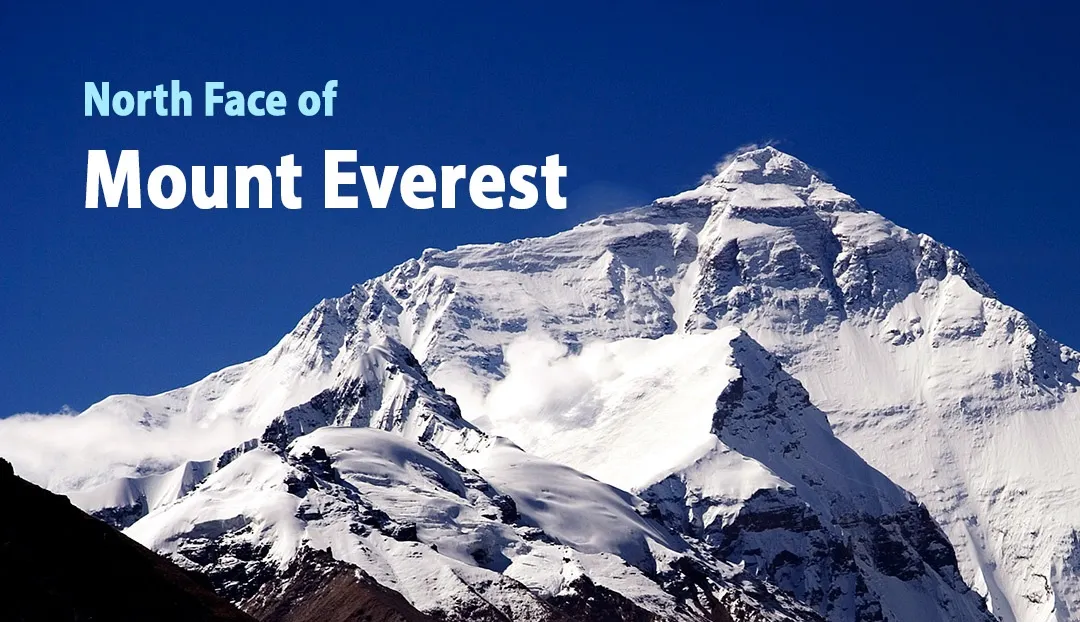When people talk about climbing Mount Everest, most imagine reaching the top of the world. But few know that not all routes to the summit are the same. The north face of Mount Everest is the toughest and most dangerous path to the peak. It is colder, steeper, and far less forgiving than any other route.
The Harsh Side of Everest
The north face is in Tibet, and from far away, it looks calm and beautiful. But once you get closer, it feels harsh and wild. The wind never stops. The slopes are icy and sharp, and the temperature drops far below freezing. The air is so thin that even simple movements feel tiring. The north side has no clear route. The south side does, and people taking the north route often run into a lot of difficulties. Everything is far harsher on the north route. Even the first day feels like you are already on the pinnacle of the mountain.
A Route Full of History and Danger
The North Face has a deep history. It was the first side of Everest explored by climbers. In the 1920s, British teams came here because Nepal was closed to foreigners. George Mallory and Andrew Irvine tried to reach the top from this side in 1924 and disappeared. No one knows if they made it or not. Their story still haunts the mountain.

Today’s climbers still pass through the same rough terrain. They face long rock walls, snowfields, and sudden storms. Even with modern gear, the risks are the same. The North Face does not care how skilled or strong you are.
The Climb Begins in Tibet
The Rongbuk glacier is where the climb begins. Climbers move through several camps from there. Each camp is colder and higher than the last. Simple acts like boiling water or tying ropes become very difficult. And you need a lot of patience and training to overcome that.
The air is incredibly devoid of oxygen here. Only about one-third the level of oxygen at sea level. Every breath feels heavy. The person becomes tired very fast and the mind often wanders. When you are getting to the top, there are three big steps, and the Third Step is very difficult to cross. It is not only steep and icy, but also open to a lot of strong winds.
Why the North Face Is More Dangerous
There are clear reasons why this route is riskier. The weather is one. The north side faces stronger winds and colder temperatures. Climbers can spend weeks waiting for a calm day that may never come.
Another reason is the descent. Coming down from the top on this side is longer and steeper. Most accidents on Everest happen on the way down. On the north face, mistakes are harder to recover from. Rescue is also difficult. Helicopters cannot easily reach these heights, and help takes hours or even days.
Isolation is the last reason. The north side is not very popular. Which means it is not used by most climbers. The loneliness can be very disorienting at times. You depend completely on yourself and your group. This discourages a lot of people.
The View from the Roof of the World
Those who succeed say the view from the north side is unlike anything else. You can see the wide Tibetan Plateau spread out below, stretching into the horizon. When the sun rises, it lights up the ice walls in gold and blue. It is a view that few will ever see, and that is part of what makes it special.
Many climbers say the north face shows both sides of the mountain—its beauty and its cruelty. It pushes people to their limits but also rewards them with moments of silence and awe.
Even today, the north face remains a serious challenge. Better gear and weather forecasts help, but they do not make it easy. The wind, the cold, and the thin air still decide who makes it and who turns back. You need a lot of endurance to make the climb from the north route. Climbers train for years to build up endurance and strength.
Respecting the Mountain
Every climber who steps onto the north face knows the risk. It is not a climb to take lightly. The mountain is powerful and unpredictable. That is why those who reach the summit through the north side earn deep respect in the mountaineering world.
The north face of Mount Everest is not only a climb. It is a test of strength, patience, and courage. It reminds us how small we are compared to nature.
The north face of Mount Everest will always be known as the hardest way up the world’s tallest mountain. It is cold, lonely, and full of danger. Yet it attracts those who want to challenge themselves beyond limits. For them, it is not about fame or records. It is about facing something pure and real—the mountain as it is.








Leave a Reply